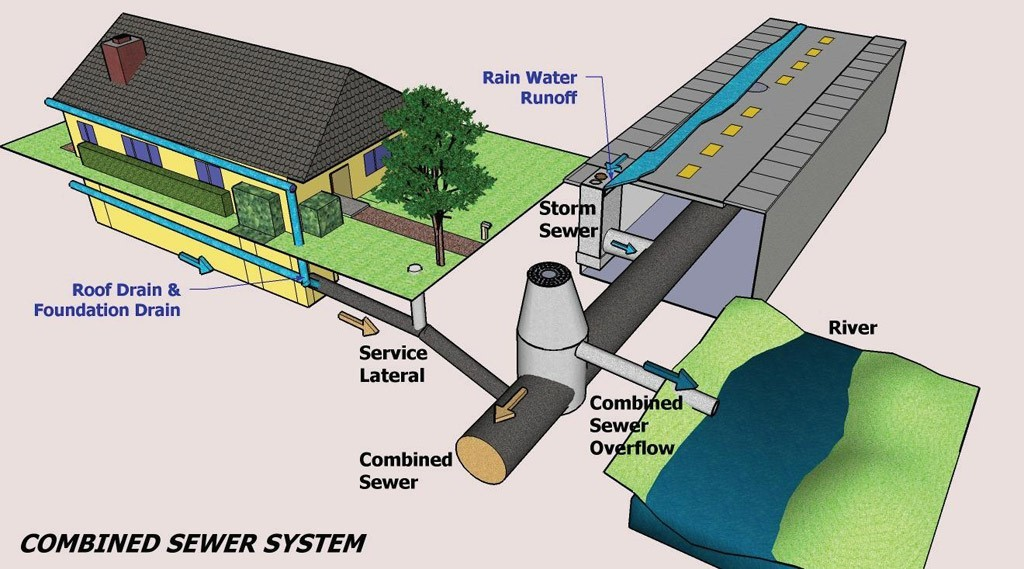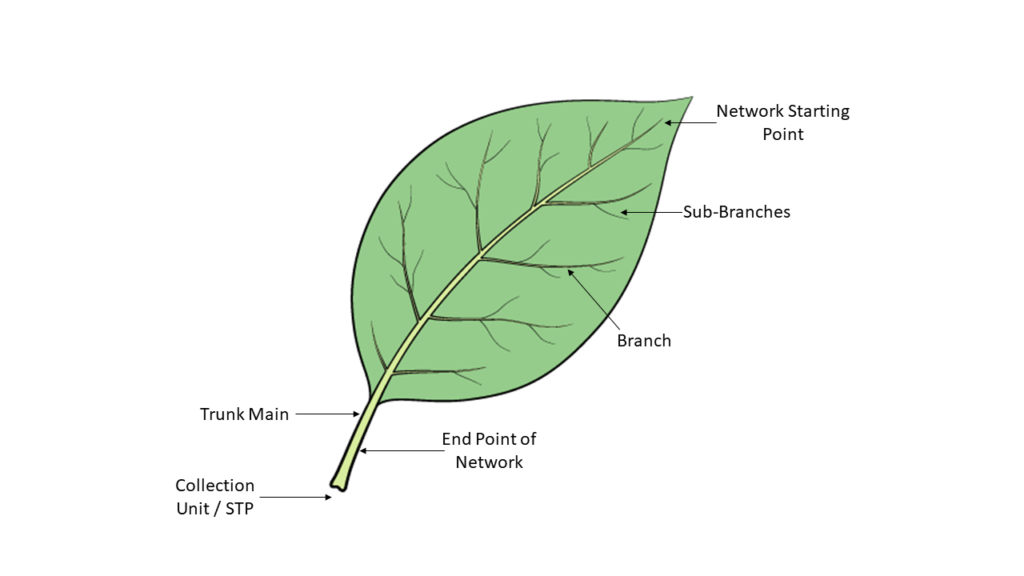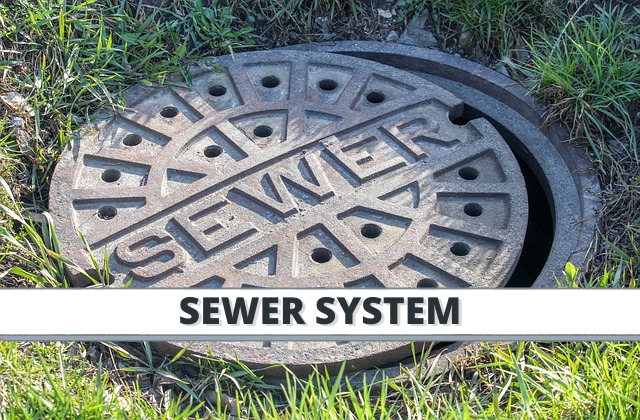Sewer System
Role of Sewer System
The major roles of a sewer system can be listed as follows: –
· Improvement in the environment by removing the sewage as it originates.
· Preventing inundation of low-lying areas that may be otherwise caused by not providing sewers.
· Prevention of vector propagation by sewage stagnations.
· Avoiding cross connections with freshwater sources by seepage in addition, there is a strong emphasis on:
a) Avoiding sewer impacts on groundwater quality by infiltration of soil water into sewers and exfiltration of sewage into soil water, occurring rather as a cycle depending on the flow conditions in leaky sewers, and
b) Moving away from the mind-set that a sewer system shall necessarily be an underground sewer right in the middle of the road with costly construction, upkeep and remediation and making the objective realizable, if necessary, in an incremental sewerage commensurate with optimizing the area coverage in the available financial and human resources to create and sustain the system.
Type of sewer System
1. Combined sewer system-

Systems that carry a mixture of both domestic sewage and storm sewage are called combined sewers. Combined sewers typically consist of large-diameter pipes or tunnels, because of the large volumes of stormwater that must be carried during wet-weather periods. They are very common in older cities but are no longer designed and built as part of new sewerage facilities. Because wastewater treatment plants cannot handle large volumes of storm water, sewage must bypass the treatment plants during wet weather and be discharged directly into the receiving water. These combined sewer overflows, containing untreated domestic sewage, cause recurring water pollution problems and are very troublesome sources of pollution.
2. Separate sewer system:

New wastewater collection facilities are designed as separate systems, carrying either domestic sewage or storm sewage but not both. Storm sewers usually carry surface runoff to a point of disposal in a stream or river. Small detention basins may be built as part of the system, storing storm water temporarily and reducing the magnitude of the peak flow rate. Sanitary sewers, on the other hand, carry domestic wastewater to a sewage treatment plant. Pre-treated industrial wastewater may be allowed into municipal sanitary sewerage systems, but storm water is excluded.
3. Sewage Collection System:

Sewage collection system work like a leaf structure. Pipe Diameter is small at starting point of the network and It will increase while coming at the end of the network similar to the main trunk of the leaf.
Engineering Consideration (As per CPHEEO Manual):
Topographical, engineering and other considerations, which figure prominently in project design, are mentioned below:
a) Design period, stage wise population to be served, expected sewage volume, sewage quality and fluctuation with respect to time
b) Topography of the general area to be served, its slope and terrain and geological considerations. Tentative sites available for STP, sewage pumping station (SPS) and disposal works, considering flooding conditions
c) Available hydraulic head in the system up to high flood level in case of disposal to a nearby river or high tide level in case of coastal discharge or the level of the irrigation area to be commanded in case of land disposal
d) Depth of groundwater table and its seasonal fluctuation affecting construction, sewer infiltration & structural design (uplift considerations)
e) Soil bearing capacity and type of strata expected to be met with in construction
f) On-site disposal facilities, including the possibilities of segregating the sullage water and sewage and reuse or recycle sullage water within the households
g) Existing water supply, sewerage and sanitation conditions
h) Water reliability, augmentation steps, drought conditions
I) Reuse in agriculture, farm forestry, non-potable urban usages and industries
j) Decentralized sewerage and progressive coverage
Design Periods (As per CPHEEO Manual):
· Sewage Collection System : 30 Years
· Sewage Pumping Station : 15 Years
· Sewage Pumping Machinery : 15 Years
· Sewage Pumping Mains : 30 Years
· Sewage Treatment Plant : 15 years
Hydraulic Parameters (As per CPHEEO Manual)
· d/D ratio < 0.8
· Minimum depth of crown level of pipe from GL (Min Cover) > 0.9 m
· Velocity criteria
1. Self-cleaning velocity
2. Scouring velocity
3. Desired Velocity at full flow – 0.8 m/s
4. Desired Velocity at full flow (For Min Slopes) – 0.6 m/s
Velocity for Ultimate Flow (m/s)
V(Min) – 0.8
V(max)-2.5
Velocity for Present Flow (m/s)
V(Min) – 0.6
V(max) – 2.0

